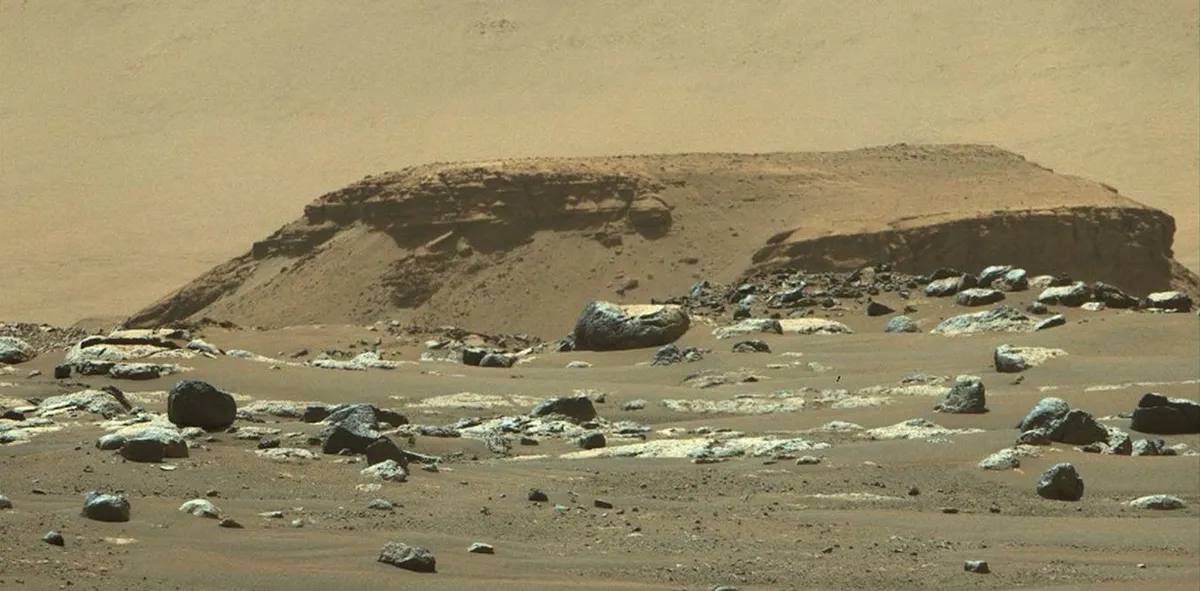
Recently, Nasa unveiled thrilling new findings from the Red Planet. Scientists have identified tiny patterns of unusual minerals in the clay-rich rocks located on the edge of Jezero Crater, an ancient lake that was once nourished by Martian river systems. This site is also the exploration area for the Nasa Perseverance Rover. These distinct “leopard spot” patterns have been celebrated as a potential indicator of past microbial life, drawing comparisons to similar traces left by microorganisms on Earth.
While the debate continues regarding whether these findings are definitive signs of life, this discovery has reignited discussions around the possibility of past life on Mars and whether any microbial organisms could still survive today. To resolve these questions, scientists will require multiple lines of evidence. There is a historical precedent for considering certain Martian environments as potentially habitable, especially when we look back at the early conditions of both Earth and Mars.
Both planets once shared similar atmospheres and magnetic fields, providing some protection from harmful solar radiation and supporting bodies of liquid water on their surfaces. These conditions are believed to have been crucial for the emergence of life on Earth, opening up the possibility that a similar process could have occurred on Mars.
As life on Earth began to flourish, Mars underwent significant changes. The planet lost its magnetic field as its core cooled, exposing it to harmful solar rays that gradually eroded its atmosphere. Consequently, the Martian surface transformed into the cold, dry desert we see today. This harsh environment leads many scientists to doubt the existence of living organisms on the surface of Mars, as it is simply too inhospitable for life as we know it.
The search for Martian microbial life has shifted focus to potential refuges such as caves, beneath ice sheets at the poles, or deep underground. These environments have Earth analogues that host microorganisms, making it plausible to consider that if life began on Mars, it could still be persistent in these extreme niches. Among these possibilities, the underground Martian subsurface stands out as the most viable habitat.
The Martian subsurface, extending from a few meters to several kilometers deep, may provide a more stable and enduring environment compared to the inhospitable surface. On Earth, the deep biosphere is home to a significant portion of microbial life, thriving in rock cracks and relying on lithoautotrophs—microbes that derive energy from rocks. Interestingly, methane, a potential byproduct of lithoautotrophic activity, has also been detected on Mars, although it can be produced through non-biological processes.
The potential for a deep biosphere on Mars depends on several factors, including the availability of liquid water, energy sources, living space, and tolerable temperatures. While there is some evidence suggesting the presence of liquid water beneath the Martian surface, this remains a topic of debate. Such liquid water could facilitate chemical reactions known as water-rock reactions, which generate energy for microbial life.
Due to Mars' lower gravity, the rocks there may be less compressed than those on Earth, allowing for greater porosity at depth—an essential factor for microbial habitat. Furthermore, Mars generates less internal heat, which could mean that temperatures suitable for life might extend much deeper below the surface than they do on Earth.
Scientists often study environments on Earth—referred to as Mars analogues—to gain insights into the possibilities of past and present life on Mars. These sites, while not identical to Martian conditions, share key characteristics such as extreme dryness, high salinity, or elevated UV exposure. Examples include Earth's deep subsurface, the Atacama Desert in South America, sediments at Lake Salda in Turkey, and salts found in Utah’s Pilot Valley.
Researchers are investigating these Earth environments to better understand how similar conditions on Mars might affect the potential for life and its preservation. In addition to studying natural analogues, scientists conduct controlled laboratory experiments to simulate Martian environmental conditions using specialized “Mars chambers” designed to replicate Martian atmosphere, radiation levels, and temperature.
As of now, there is no conclusive evidence confirming the existence of life on Mars, either past or present. Nasa’s “leopard spots” represent the most promising indicators we have encountered so far, yet they remain inconclusive. If life exists on Mars today, it is likely not widespread, as our probes and rovers have yet to detect any clear signs.
Exciting opportunities lie ahead with the upcoming European Space Agency (ESA) ExoMars Rosalind Franklin rover, which will have the capability to drill up to two meters below the Martian surface. This mission offers a chance to explore the shallow subsurface, potentially uncovering living microorganisms. However, many scientists agree that deeper exploration will be necessary to truly understand the potential for life on Mars. Drilling deep into the Martian subsurface presents significant scientific and engineering challenges, but it could ultimately hold the key to discovering existing Martian life.